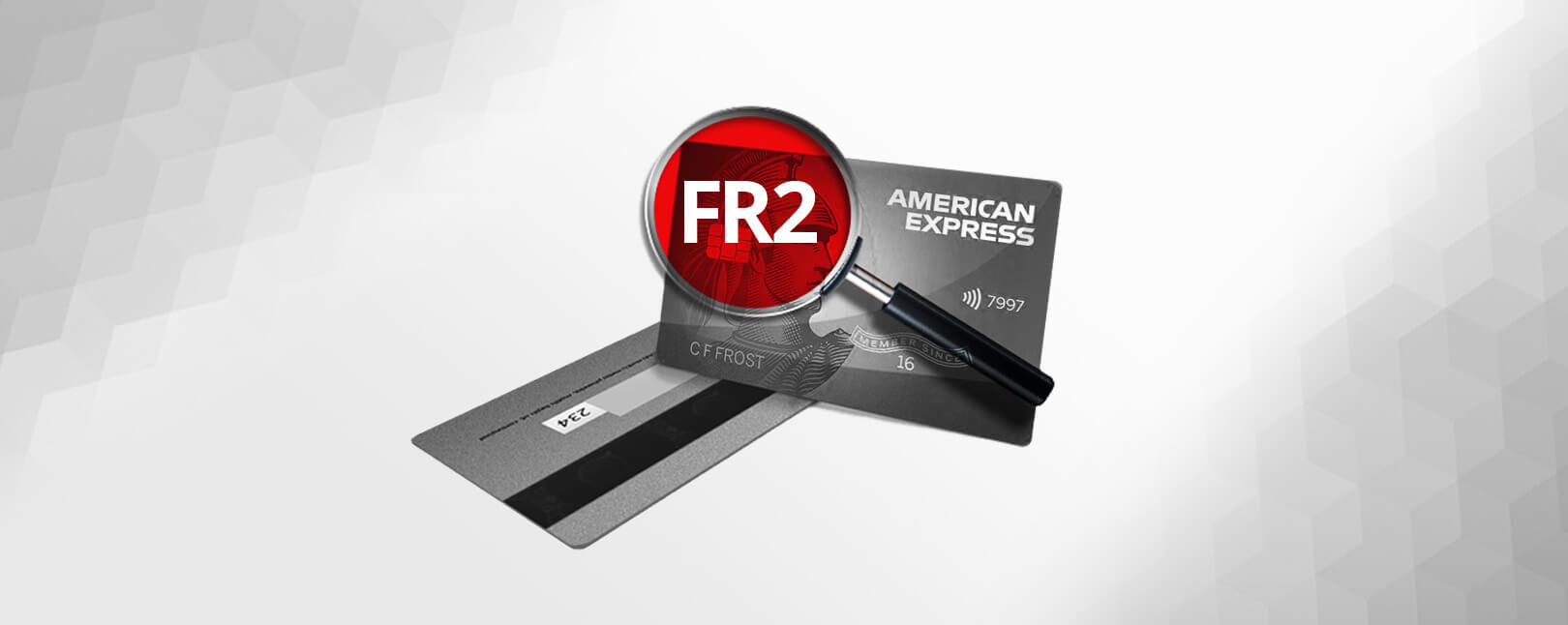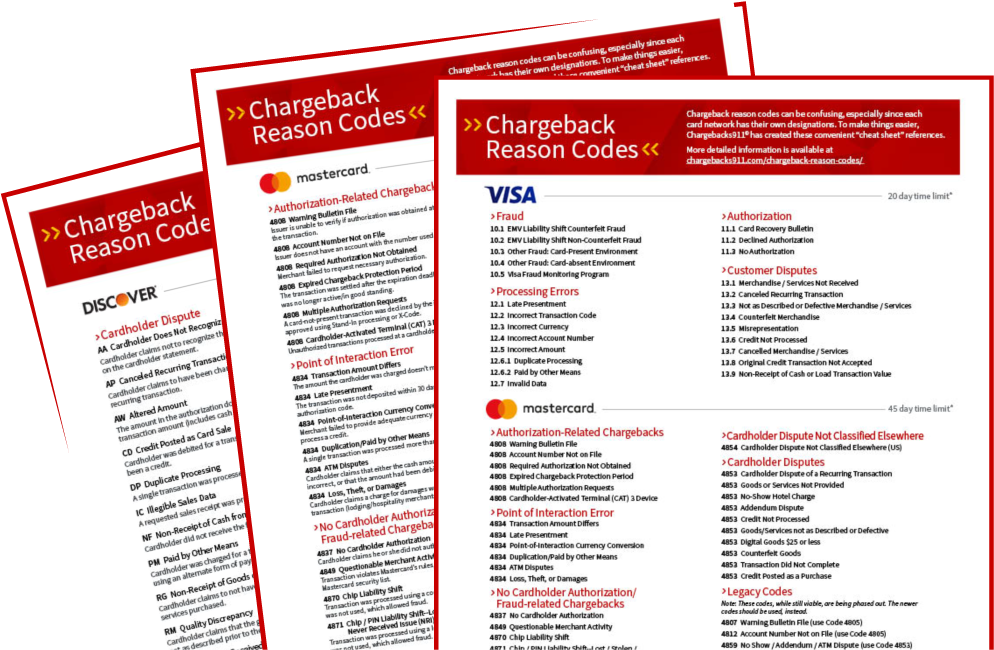
How to Handle Amex Reason Code FR2 Chargebacks
American Express breaks down the acceptable causes for a customer to dispute a credit card transaction in their dispute guidelines. This is done for the sake of simplicity and standardization.
Each chargeback trigger has a designated “reason code.” Amex can then assign the appropriate code to each case to show the given reason for the chargeback.
Learn more about Amex reason codes
Today, we’re looking at one reason code in particular — FR2 — and exploring the causes, timeframes, fees, and other specifics. We’ll also explore what you can do to prevent these chargebacks from happening.
Recommended reading
- What is Compelling Evidence? Examples & Tips to Win Disputes
- Credit Card Disputes | Step-by-Step Process Guide for 2025
- Mastercard Chargeback Time Limits: The 2025 Guide
- Chargebacks911® are Finalists for ‘Outstanding CX in Digital Sales Strategy’ for 2025!
- How to Detect Fraud: Top 20 Tips to Stop eCommerce Scams
- Verifi Order Insight: Using Data to Block Visa Disputes
What is American Express Reason Code FR2?
American Express chargeback reason code FR2 is “Fraud Full Recourse Program.” This reason code is used to explain that an Amex cardholder identified a charge on their statement, and denied authorizing that charge. Furthermore, this happened after your business was added to the Fraud Full Recourse Program, meaning you have limited options for responding to the chargeback.
Being added to the Fraud Full Recourse Program means you cannot use compelling evidence to respond to a chargeback. Documentation like photos, customer signatures, and copies of email conversations are not admissible as evidence.
What is the Fraud Full Recourse Program?
Similar to the MATCH List maintained by Mastercard, American Express managed the Fraud Full Recourse Program as a way to identify merchants that submit an excessive number of fraudulent purchases for processing.
It could be that the merchant in question is using outdated fraud detection tools, or is bypassing necessary security measures, and is failing to detect fraudulent transaction attempts as a result. Amex generally expects merchants to maintain a fraud ratio of less than 1% of transactions. If the merchant exceeds this, they may be added to the Fraud Full Recourse Program.

When a cardholder disputes an Amex transaction, American Express will typically submit a merchant inquiry to get more information before filing the chargeback. Once a merchant is added to the Fraud Full Recourse Program, though, American Express will skip these merchant inquiries.
Merchants can exit the program by reducing their overall fraud rate. Whether or not the merchant’s fraud rate is considered “acceptable” is determined by gauging the number of chargebacks filed over a period of time with a “fraud” reason code.
What Caused This Dispute?
Amex Chargeback Reason Code FR2 is primarily issued when a merchant in the Fraud Full Recourse Program receives a chargeback related to a fraud claim. This scenario can arise if the merchant processed a transaction that was not authorized by the cardholder. In other words, the transaction was fraudulent.
This may happen because:
How to Respond to Amex Reason Code FR2 Chargebacks
Naturally, if you receive an Amex FR2 chargeback, you’ll want to resolve the issue right away.
Under normal circumstances, representment is the process through which you could challenge a chargeback. You provide evidence to the card issuer (in this case, American Express) that all aspects of the transaction were legitimate and in accordance with the card issuer's policies. Reason code FR2 chargebacks different from others, though, in that your options for representment are limited.
By virtue of being in the Fraud Full Recourse Program, Amex has explicitly stripped away your right to respond to fraud-related chargebacks. So, have only two options for a response:
- Prove You Were Not in the Fraud Full Recourse Program
You must provide proof that you were in not the Fraud Full Recourse Program at the time at which the chargeback was filed. This can include formal documentation from Amex about your merchant status. - Prove You Already Credited the Buyer
Alternatively, you might have already issued a credit to the buyer as a way of trying to avoid the dispute. In this case, you’ll need to offer proof that you already provided a credit to offset the amount charged.
Also, remember that there’s a strict time limit to consider. You have just 20 days in which to submit your response to American Express. However, this time frame also includes the time it took for your acquirer to provide you with a dispute notification, as well as time spent by the acquirer reviewing and submitting your case. In practical terms, you’ll often have five days or less in which to prepare and submit your response.
How to Prevent Amex Reason Code FR2 Chargebacks
As the old adage goes, “an ounce of prevention is worth a pound of cure.”
You may never be able to stop chargebacks entirely. But, you can limit your exposure to risk and keep your chargeback ratio in good standing by adopting a few best practices. Generally speaking, you’ll want to:
#1 | Know Key Fraud Red Flags
New customers — especially those making a high-value purchase — should be subject to additional screening. Other factors like transaction velocity, requesting expedited shipping, and billing address mismatches are signs of possible fraud as well.
#2 | Use 3-D Secure
The latest version of 3DS 2.0 technology can be a great asset when trying to verify buyers. It causes minimal friction, and can substantially cut down on the number of fraudulent transactions that slip by your defenses.
#3 | Adopt a Multilayer Approach
Use a number of fraud detection tools that can work together to strengthen and reinforce one another. Proxy piercing, geolocation, CVV verification, and address verification are just a few examples.
#4 | Blacklist Known Fraudsters
Identify accounts associated with fraudulent activity, then add them to a blacklist. This will prevent those accounts from making purchases with you again in the future, ensuring you won’t be victimized twice.
#5 | Update Your Software
Outdated fraud prevention solutions may fail to intercept new threats, while other outdated technologies can be exploited by fraudsters. Keep up with all software updates and patches and deploy them as soon as possible.
#6 | Deploy AI and Machine Learning
Machine learning technology takes past evidence and data and uses it to refine fraud decisioning. The more data incorporated, the more accurate and intelligent the decision-making process becomes. This helps make further improvements easier to accomplish.
Take a Wider View
You can dispute invalid chargebacks from Amex reason code FR2. However, it’s much more efficient to take a proactive stance. The same is true of the other chargeback reason codes, as well. A truly effective chargeback management strategy must encompass prevention as well as disputing cases of friendly fraud.
Chargebacks911® can help your business manage all aspects of chargeback reason codes, with proprietary technologies and experience-based expertise. Contact us today for a free ROI analysis to learn how much more you could save.
FAQs
Does Amex investigate chargebacks?
Yes. American Express investigates chargebacks by reviewing the evidence provided by both the merchant and the cardholder to determine the legitimacy of the transaction and decide on the chargeback claim. This process ensures a fair resolution based on the documentation and arguments presented by both parties.
What is the reason code for a chargeback on American Express card?
An American Express chargeback reason code is a code that identifies the specific reason a cardholder or issuing bank has disputed a transaction, guiding the merchant on the nature of the dispute and what evidence may be required to contest it. Each code corresponds to a particular issue, such as unauthorized use, processing errors, or non-receipt of goods or services. Click here to see a full list of Amex reason codes.
Do police investigate chargebacks?
Police typically do not investigate chargebacks as they are considered a dispute between the merchant and the cardholder, handled through the card issuer's internal processes. However, if fraud is suspected as the cause of a chargeback, law enforcement may be involved in investigating the fraudulent activities.
How successful are Amex disputes?
The success of an American Express dispute depends on the merchant's ability to provide compelling evidence that the transaction was valid and in accordance with Amex policies. Success rates vary widely based on the nature of the dispute and the quality of the documentation provided by the merchant.
How does American Express investigate disputes?
American Express investigates disputes by reviewing documentation and evidence provided by both the cardholder and the merchant, such as transaction receipts, proof of delivery, or communication records, to determine the validity of the chargeback claim. This process aims to ensure a fair resolution based on the facts presented by both parties.









